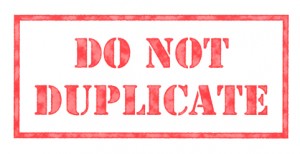Resumes serve two purposes: 1) To present important information and 2) to present that information succinctly.
When writing a resume, as when writing anything, think of your audience: The person reading your resume first will probably be a hiring manager. She or he will read through dozens – perhaps hundreds – of resumes, before inviting a handful of people in to interview for a job. Think of your resume as a first step. Along with a strong cover letter, it can get you in for a solid face-to-face talk that lands you your desired job – or, at least, another interview. Very rarely are people hired on resumes alone, but resumes are first impressions, and there’s some truth to the saying that “first impressions are everything.”
Try to follow the following format when writing your resume:
Personal information
Name
Address
Cell phone
Email
Then, in separate sections:
Education
Put this after your name and contact information if you’re a recent graduate; otherwise, education can follow work experience. The lengthier your work history, the less important your education is generally considered to be. Typically, employers are most concerned with what you’ve been doing recently. Education is always important, but if you completed college 15 or 20 years ago, it probably doesn’t make sense to place your collegiate credentials at the top of your resume.
Work experience
List your professional experience from most to least recent. Include the name of your employer, your title, the location of your workplace (e.g. city, state), and the dates between which you held each position. Provide a brief description of the duties you performed, taking care to highlight the skills and experiences that are most important to your potential employer. Do not, however, point out in your resume that these skills are important or relevant. This can be done in a cover letter, and in any case, your qualifications should speak for themselves.
A word of caution: Do not provide too-lengthy descriptions. Resumes should be, at most, two pages – but ideally one page. To limit the length of your resume, consider excluding experience that is not recent enough to be relevant (e.g. the job you worked in high school) or experience that is not qualitatively relevant to your potential position (e.g. don’t include a retail job if you’re applying to be an engineer).
Volunteer experience
Volunteering shows commitment and, in some cases, social awareness. List your volunteer experiences as you do your paid experiences – in order of most to least recent. Also, include the names of the organizations you assisted, the locations of these organizations, the dates of your involvement, and the nature of your responsibilities.
Skills
Use this section to highlight abilities not covered elsewhere. Do not list generic, abstract skills (e.g. communication skills, organizational ability). Rather, focus on specific, concrete skills, such as language proficiency (indicate both language and level of facility) and computer training (e.g. knowledge of certain operating systems or software).
Interests
A brief list of interests (e.g. hiking, photography) reveals more about you as an individual. Many employers recognize that non-work interests and accomplishments positively affect work performance, and some employers would rather not hire people who don’t have “balanced” interests (i.e. interests outside work).
A word about formatting:
Keep your margins at 1 inch and your font at 11 or 12 point.
Do not use multiple fonts; use fonts of multiple colors or sizes; use underlining, bold, and/or italics to excess or inconsistently (they may be used in moderation and so long as their use follows a predictable pattern).
Also, pay attention to verb tenses. If you currently hold a position, use the present tense to describe your activities. If you no longer hold a position, be sure to use the past tense.
The bottom line is to make your resume easily readable. Could a hiring manager scan it in less than a minute, without rereading it; glean your strengths; and make a decision?
